Nowadays, pigs are getting popular as pets instead of simply being meat-producing animals. They’re clever and cute, leaving many people in wonder and some questions. Among these questions involves the reason why pigs have curly tails. Many are curious if it has some effects on the pigs or not.
Why do pigs have curly tails? Pigs have curled tails due to their breed. Some breeds naturally form curled tails, while others don’t. There’s also an unfounded belief that curled-tailed pigs are said to start in China, dating back thousands of years ago.
The Chinese farmers are said to develop the curly-tailed pigs breed accidentally. This unintended breed is rooted in pig fighting, wherein pigs bite each other’s tails, causing them to get curled. Nonetheless, there’s no supportive evidence that can prove these claims.
To better understand this aspect, you may proceed by reading the additional information below. In this article, you’ll get the answer to many questions you might have about pigs.
Pig Tails in a Nutshell

The tails of pigs are said to be relative to human skin. Although it doesn’t have a wide array of purposes, it helps the pigs wad off the insects that bug them. When curled, this can be a sign of a health issue if the pig doesn’t have a natural curled tail.
You may also look for instances, such as if the pig was docked or bitten on its tail. This way, you can tell if the curled tail is a sign of sickness or it’s a natural thing.
Hog farms nowadays practice tail docking or tooth clipping to prevent pigs from biting each other’s tails. These practices help stop the formation of curled tails caused when pigs are fighting with each other.
See some of the naturally curly tails pig breeds below to avoid overthinking about the condition of your pigs.
Pig Breeds That Have Naturally Curled Tails
Each animal breed has its own set of characteristics, and pigs aren’t an exemption to that. With that said, hogs of a different breed produce characteristics that other classes won’t possess, like the curled tails.
Some pigs are naturally born with a curly tail like the Berkshire pigs and others with a naturally straight tail like the feral hogs found in Texas.
See the list of curly tails breeds beneath and know their respective origin.
Duroc Pigs

The exact origin of the old Duroc pigs is said to be unknown. Nonetheless, the modern Durocs originated from New Jersey. This breed type has large frames and is late to mature. They also have a normal curly tail and small lop ears.
Large White Pigs

The origin of the Large White Pigs extends its roots in the old Yorkshire breed. These pigs can be recognized by their slightly sunken faces, white hair, and erect ears. This breed also has naturally curled tails and comes in large sizes.
Berkshire Pigs
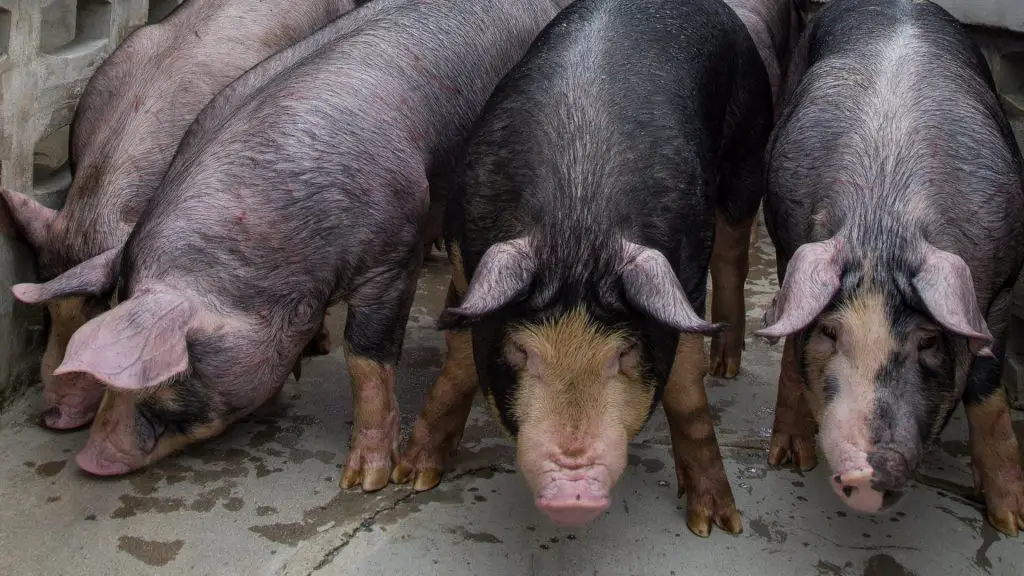
As the name suggests, this type of breed started from the county of Berkshire. It has a natural black color with some white on its lower leg, muzzle, and on the tip of its inherently curled tail.
Piétrain Pigs
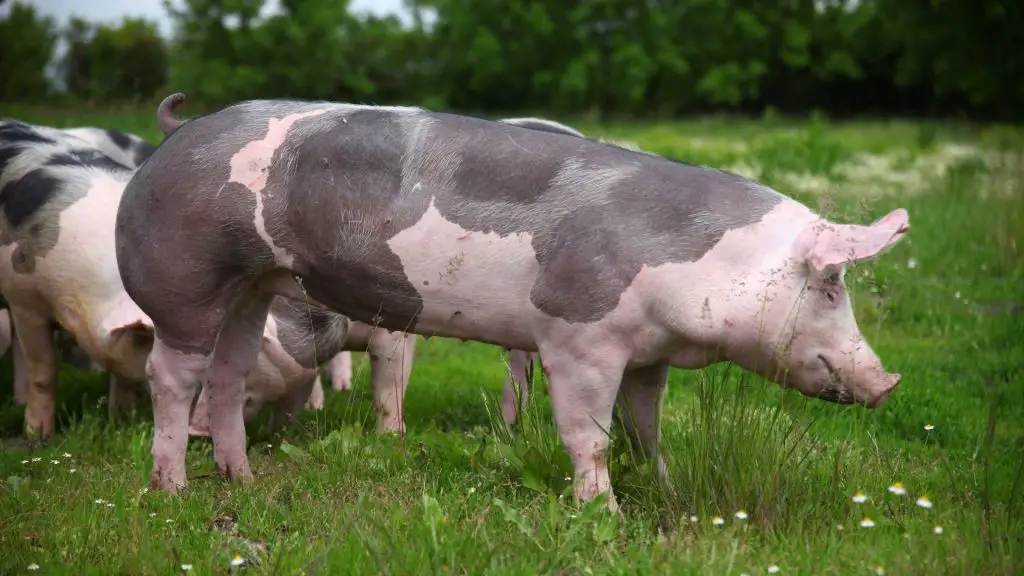
Piétrain pigs are domesticated Belgian pig breeds that are native to Wallonia (a region in Belgium). This breed is typically medium size with black and white spots on its back. The Piétrain pigs have erect ears and natural curly tails.
Hampshire Pigs
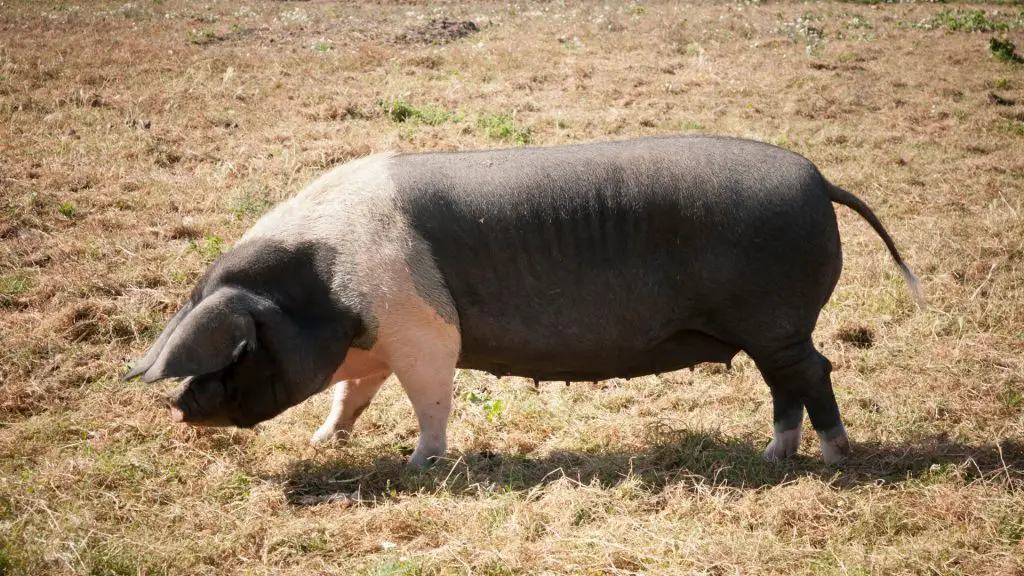
Hampshire pigs are said to be one of the oldest hog breeds. This breed was first introduced in Northern England and Southern Scotland. The pigs of this breed have erect ears, a natural curly tail and are typically black with a white belt.
Hampshire pigs are known for their lean meat, heavy muscles, and large sizes. These are some of the qualities of specific hog breeds with natural curl tails.
If you’re curious about the hog breeds with natural straight tails, the information below could be pretty handy for you.
What Could Straight Tails of Pigs Indicate?
Most pig breeds possess curly tails. Nonetheless, if you see these tails straightened out, this means that the hogs are uncomfortable with their environment.
A study shows that those pigs living in stressful conditions often developed straight tails. In other words, straight tails can also be an indication of the mood of pigs. This case is also frequent when hogs don’t have enough food and enough space to wriggle themselves, based on the observations of most farmers.
Now that the hog breeds with curly tails have been tackled, you might be wondering, what about those with natural straight tails? Never miss a beat, as we will discuss them below.
Pig Breeds With Straight Tails
As has been said above, each breed differs in features so that you can expect breeds with natural straight tails. One of these breeds is the pot-bellied pigs.
Pot-Bellied Pigs
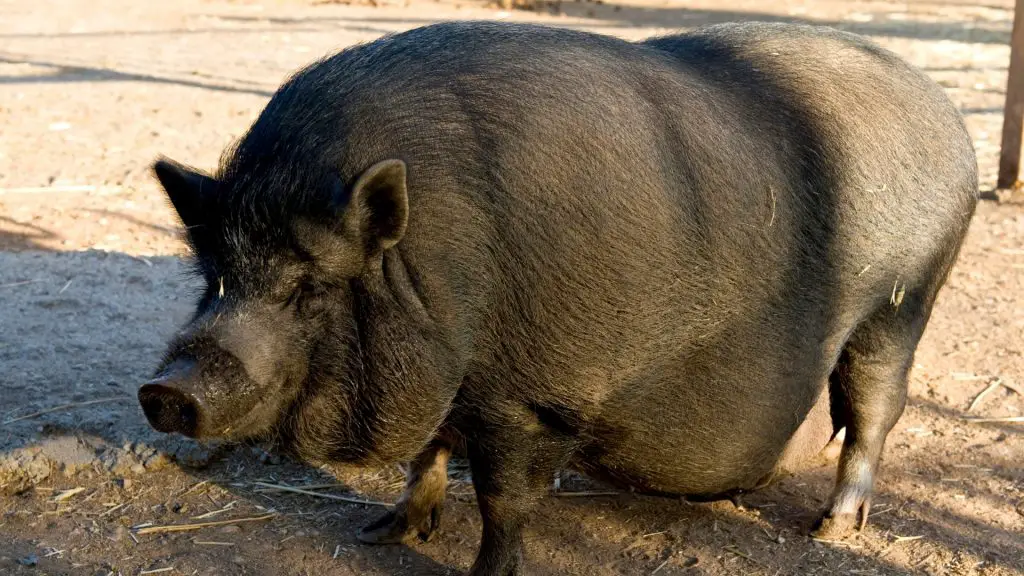
Pot-bellied pigs originate from Vietnam and are kept as companions rather than for their meat. Their color varies from white to all black. They have erect ears, straight tails, and prickly hairs when they get matured.
This breed is smaller compared to the typical domesticated pig. However, the hogs under this breed are thick and heavy that may weigh up to 200 pounds when they mature.
Ba Xuyen Pigs
Ba Xuyen pigs are a blend of French and Chinese hogs. They’re a domesticated breed of Vietnamese swine commonly spread across the Mekong River Delta.
They have black and white spots on their extremities, causing them to be eye-catching to some people. This breed type can weigh around 100 kilograms in the span of eight to ten months.
Their tails are straight and have human-like teeth, protecting them from oral diseases better than those other breeds. They’re clever, clean, and resilient to some conditions prevalent to other breeds.
Cinta Senese Pigs
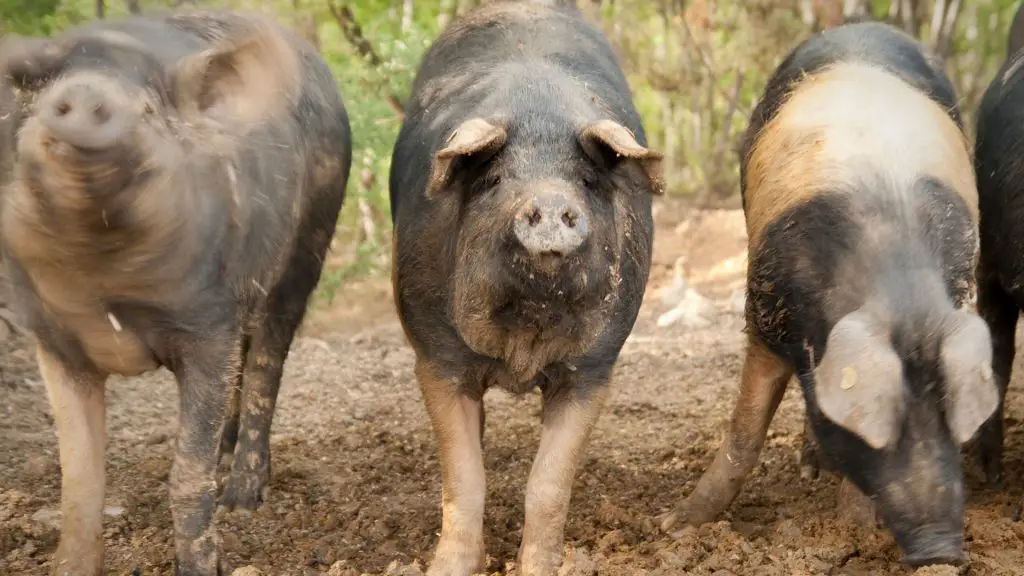
The Cinta Senese pigs are a domesticated breed of Siena, Tuscany. It’s located in central Italy and is considered an ‘endangered breed’ by the Food and Agriculture of the United Nations (FAO).
These pigs have straight tails, black hair, an elongated appearance, and a white stripe across their chest.
Mulefoot Pigs
The Mulefoot pigs are American breed hogs that are believed to be rooted in the Spanish swine. Their color is black with some white spots on their body.
They have erect ears, straight tails, and wattles on their neck, distinct from other breeds. The hogs that fall under this breed can weigh up to 600 pounds.
Mangalica Pigs
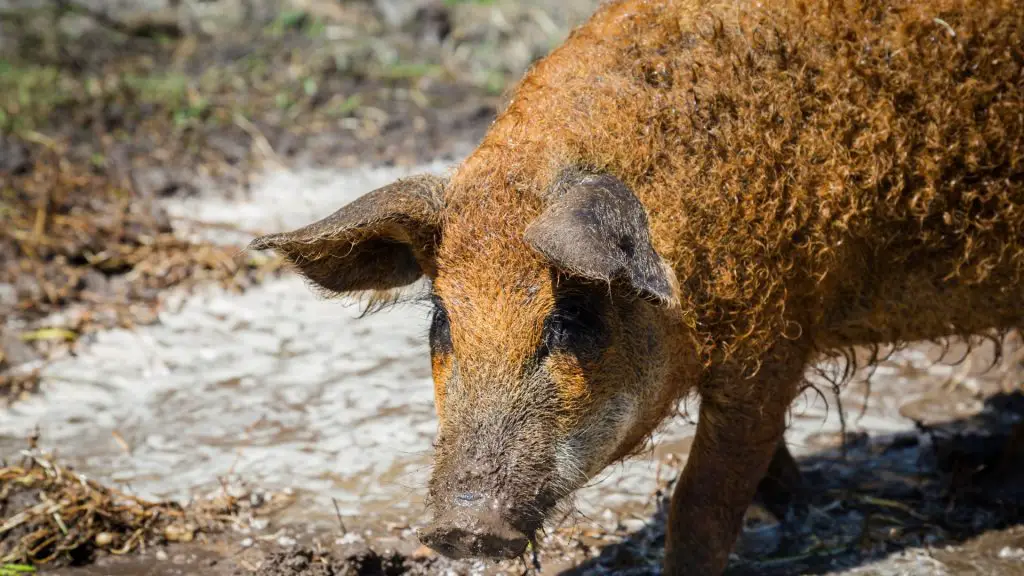
The Mangalica breed pigs originated from Hungary. These hogs have unique features, such as their sheep-like, blonde hairs. Their ears are perked up, and their tails are straight.
During winter, they’ll have long hairs similar to the thick and curly sheep wool. On the other hand, their fur becomes shorter and thinner during summer while shiny, blond hair during spring.
Now that you know some of the hog breeds, which have natural straight tails, it’s time to understand why pigs behave a certain way. For example, why do pigs wag their tails?
Why Do Pigs Wag Their Tails?
Domesticated pigs are naturally sweet. When you see them wagging their tails, it’s an indication of their gladness and excitement. This further shows that they’re comfortable and content where they’re at and with whom they’re with.
Nonetheless, if they’re wagging their tails while squeaking, they could be feeling unsafe and threatened in their current environment. It could also be that they’re hungry. That’s why they’re crying, so it would be best to be observant to determine the cause of your hog’s behavior.
Are Pigs Capable of Getting Attached to Their Caretakers?

Pigs are emotionally intelligent and social as dogs. They can recognize people who are taking good care of them, as well as observe their environment.
According to animal behavior research, pigs mirror what they see and act based on those actions. They’re clever and emotionally capable of getting attached to their owners or caretakers.
One example of knowing they’re attached to you is through their action. If you see these pigs wagging their tails while looking happy at you, it’s a positive sign that they like you.
Is Raising Pigs Profitable?
Raising pigs can be profitable and sustainable as you can raise money from them in various ways. For example, you can sell their meat, sell the hog as a whole in your nearby market, or sell it live to those who are doing livestock buy and sell.
Other ways are through selling the newborn pigs and their manure, which are utilized for fertilizing croplands. As long as you have enough space of your own and make it into a small farm, raising pigs can help make good profits and have a sustainable income all year long.
Summary
In general, the curly tails of pigs aren’t caused just because of their tail-biting fights. It’s more because of their breed types and living conditions to which they are exposed.
Pigs are also very capable of getting attached to their owners, making them lovely to be petted. You can also start a hog-raising business if you want to have a sustainable income.
List of Sources
Tail Posture and Motion as a Possible Indicator of Emotional State in Pigs
Tail Posture as an Indicator of Tail Biting in Undocked Finishing Pigs
Pigs Learn What a Mirror Image Represents and Use It to Obtain Information
Docking Piglet Tails: How Much Does It Hurt and for How Long?
